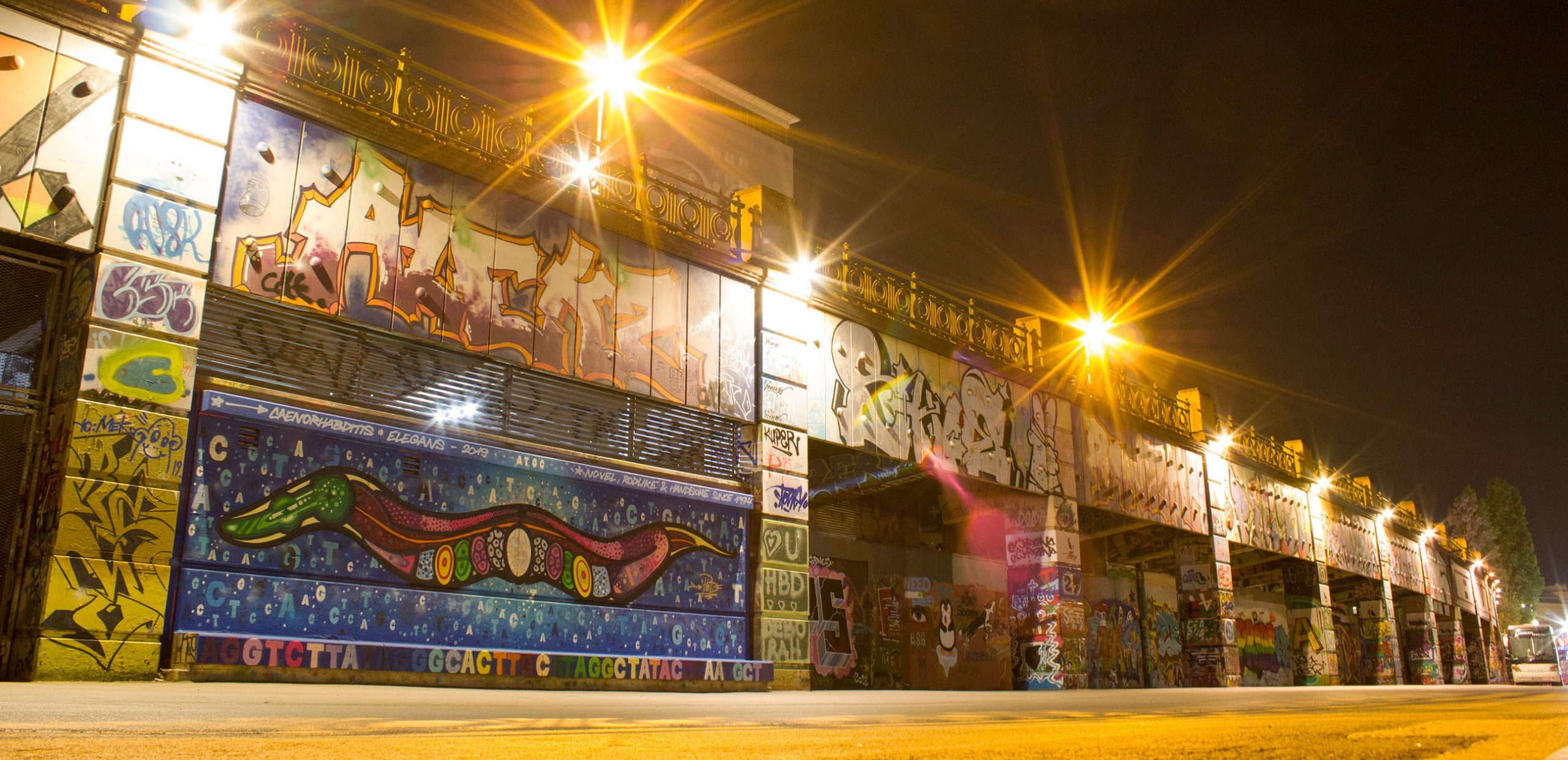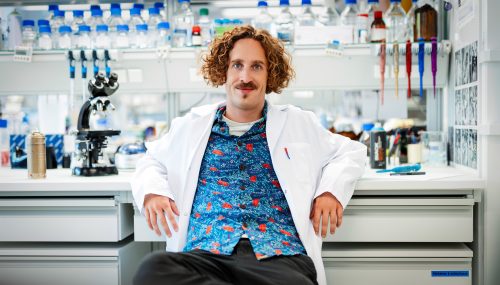SciArt profile: Philipp Dexheimer
Posted by the Node, on 9 May 2024
In this SciArt profile, we meet Philipp Dexheimer, who combines his research background and love for art to effectively communicate complex ideas in science to a broad audience. As an artist at heart and a scientist in mind, Philipp’s creations are inspired by the concepts and molecular aesthetics of nature. He works with diverse techniques and media, from Molecular Graffiti to scientific illustrations and videography.

Can you tell us about your background and what you work on now?
As a scientist, I have always been fascinated by the beauty and complexity of life. During my PhD at the IMP Vienna, I focused on RNA Biology, studying the functions of microRNAs in early animal development using C. elegans as a model system. For my Postdoc, I stayed with the nematodes but shifted my focus to research protein aggregation in the context of myopathies. Our results put protein misfolding on the map as a critical contributor to certain myopathies and suggest that caloric restriction is a promising treatment strategy in this context. My postdoc paper is about to be submitted, and I very recently left the lab to go all-in with Science Art, so it’s the beginning of an exciting new professional chapter for me.

Were you always going to be a scientist?
I always had a love for biology – Life is, after all, the most fascinating phenomenon in the universe – and the decision to study Molecular Biology after school came very intuitively without having to think about it much. Once I set foot in the lab for the first time as an undergrad, I figured that this is what I want to be doing. Next to the intellectual joy of being a detective investigating the intricacies of nature, the scientific community is just great company; one gets to meet so many inspiring people from all over the world. That’s what made me really feel at home in the institutes of this world, and I would not want to miss a single day of my time as an active researcher.

And what about art – have you always enjoyed it?
In school, I always liked to doodle around when class wasn’t particularly interesting, but things didn’t start moving until I ended up picking up a spray can at the age of 15. I spent a lot of time at the skatepark and on basketball courts which, together with a general interest in Hip Hop culture, led me to start my artistic development by painting Graffiti. Since then, urban art continues to be a passion of mine. Once I got into the lab, I started to draw my inspiration more and more from biology, and by now the main topic of my creations revolves around nature.

What or who are your most important artistic influences?
My style has definitely been influenced a lot by urban art. In addition, I love comics and animated cartoons; they continue to be a source of inspiration for my work. More recently, I started to get into watercolor and ink drawings, which I love because the medium is very organic – just like biology itself. David Goodsell is one of my science art heroes; his paintings of the molecular world in scale are to me the most outstanding drawings of the molecular world.

How do you make your art?
When I don’t hold a spray can in my hand, I love working with Photoshop to create digital artwork for journal covers, scientific posters, or biotech homepages – finding a way to illustrate complex concepts in a way that resonates with the human mind & soul never fails to excite me. More recently, I also started to experiment with video creation and editing. Short videos are a great medium to make science accessible to a large audience, and I am convinced that they will become a more important part of the science communication toolbox in the future.
In addition, I think that AI tools are in the process of revolutionizing the way we design illustrations and other art forms – my digital workflows have become increasingly complex and by now involve hopping back and forth between many different programs. I would never take the direct output of any AI tool and use it as a final artwork, though. I want to have a personal touch in there, otherwise it just doesn’t feel like my own creation. AI-generated designs are mostly somewhat generic and lack the certain edge that makes art so interesting after all. My belief is that the interplay of AI prototyping and “classic” manual editing is the future of digital artwork.

Does your art influence your science at all, or are they separate worlds?
Both science and art draw a lot from the ability to extract the abstract essence of reality that manifests itself in concrete forms in the world surrounding it. While there is no direct influence of my artistic endeavors on the science I do in the lab, I think that training the cognitive ability of abstraction comes in handy when contemplating biology. In the end, great science aims not at describing a particular phenomenon in a certain organism which happens to be the subject of our studies, but rather at finding the bigger concepts behind the workings of Life.
What are you thinking of working on next?
There are many projects in the pipeline at the moment; my personal favorite goal for the upcoming years is to travel the world and paint large-scale murals on the walls of research institutes and public buildings. I think Molecular Graffiti represents a unique way of porting scientific concepts into public space and has a lot of potential to spark curiosity about the life sciences among a large audience, rendering biology accessible also to non-experts. So if you, dear Reader, happen to have an idea for a wall that could use a beautiful science mural, feel free to reach out!

Homepage: www.philippdexheimer.com
Twitter: @PhDexheimer
LinkedIn: https://at.linkedin.com/in/philipp-dexheimer-phd-0891071b3
Instagram: @philipp.dexheimer




 (No Ratings Yet)
(No Ratings Yet)